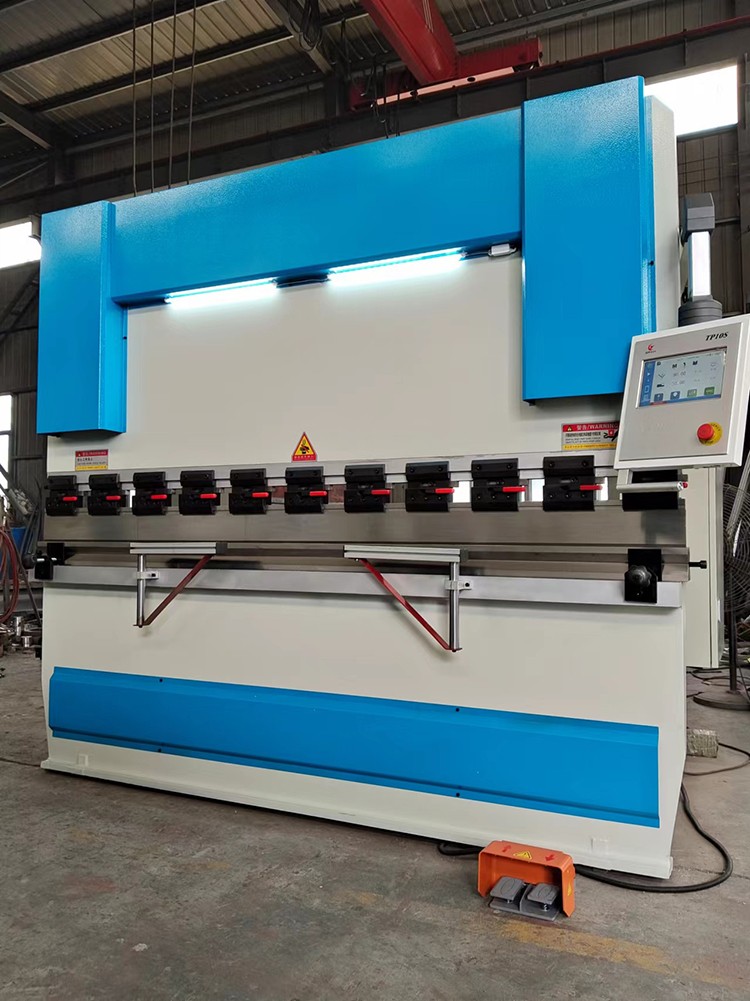

We are a professional bending machine manufacturer with over 10 years of industry experience. Today, we would like to share some tips on reinforcing hydraulic oil pipes to prevent oil leaks in bending machines:

As a critical piece of equipment for metal sheet processing, the stability of a press brake's hydraulic system directly impacts its performance and service life. Hydraulic oil lines, as an essential component of the hydraulic system, can cause issues if leaks occur. Not only does this result in oil waste, but it can also affect equipment precision and even pose safety hazards. This article will systematically introduce practical techniques for reinforcing and preventing leaks in hydraulic oil lines, helping operators effectively prevent and resolve oil leakage issues.
1. Selection and installation of oil pipes
Selecting the appropriate oil pipe material
Hydraulic oil pipes should preferably be made of high-quality rubber or polyurethane pipes that are oil-resistant and high-pressure resistant. For high-pressure working environments, it is recommended to use reinforced oil pipes with steel wire braiding. The inner diameter of the oil pipe must match the system flow rate. Oil pipes that are too thin will increase fluid resistance, while those that are too thick may affect pressure transmission.
Standard installation procedures
When installing oil pipes, maintain natural bends and avoid sharp bends or twists. The bending radius should be no less than five times the outer diameter of the oil pipe. Use special pipe clamps to secure the oil pipes, with a fixed spacing of 300-500 mm. In areas with significant vibration, the spacing can be appropriately reduced. During installation, take care to protect the outer surface of the oil pipes and avoid contact with sharp edges.
2. Joint Handling Techniques
Joint Selection Principles
Prioritize the use of original manufacturer joints that are compatible with the oil lines. Tapered thread joints offer superior sealing performance compared to straight thread joints. When installing, apply specialized sealant to the threaded areas. For quick-release joints, ensure the locking mechanism is intact and inspect the integrity of the O-ring before use.
Joint Installation Guidelines
When installing, first tighten the joint by hand, then use a tool to tighten it an additional 1/4 to 1/2 turn. Over-tightening may cause deformation of the sealing components. For flange connections, ensure the mating surfaces are clean and flat, and the sealing gasket is centered. After installation, perform a pressure test to check for leaks.
3. Daily maintenance methods
Regular inspection system
It is recommended that hydraulic oil pipes be visually inspected during each shift, with a focus on joints and bends. A comprehensive inspection should be conducted once a month, including measuring changes in the outer diameter of the oil pipes and checking for surface cracks. If bulges, cracks, or oil stains are found on the surface of the oil pipes or at the joints, they should be replaced immediately.
Proper Maintenance and Operation
When cleaning oil pipes, use a soft cloth to wipe them clean. Do not use sharp tools to scrape off dirt. In winter, pay attention to preheating the oil temperature to avoid cold starts that could cause the oil pipes to become brittle. When the equipment is not in use for a long period of time, drain the hydraulic oil from the oil pipes and protect the pipes with protective covers.
4. Emergency Response for Oil Leaks
Temporary Remedial Measures
When minor leaks are detected, first clean the leaking area and apply specialized hydraulic sealing tape for temporary wrapping. For leaks at joints, attempt to retighten the joint, but be mindful of force control. After emergency response, closely monitor the situation and arrange for formal repairs as soon as possible.
Oil Hose Replacement Guidelines
Before replacing oil lines, the system must be depressurized to ensure no residual pressure remains. The length of new oil lines must be measured accurately, with appropriate allowance for excess length. After installation, perform an air-bleed operation and slowly pressurize the system to check seal integrity. It is recommended to replace adjacent aged oil lines simultaneously to avoid repeated repairs in the short term.
5. Recommendations for environmental optimization
Improve the working environment.
Avoid exposing oil pipes to corrosive substances as much as possible, and install protective covers in acidic or alkaline environments. Take heat insulation measures in high-temperature areas to maintain the working temperature of oil pipes between -20°C and 80°C. Add shock absorption devices to equipment with high vibration.
Developing proper operating habits
Operators should develop proper operating habits to avoid overpressurizing the equipment. When bending, be careful not to let the workpiece collide with the oil pipe. When moving the equipment, check the position of the oil pipe in advance to prevent damage from pulling.
Leak prevention maintenance of hydraulic oil pipes is a systematic project that requires strict control at every stage, from selection and installation to daily maintenance and emergency response. Through standardized operations and scientific maintenance, the risk of oil leakage can be significantly reduced and the service life of oil pipes can be extended. It is recommended that companies establish a comprehensive hydraulic system maintenance system and provide regular professional training for operators to ensure that equipment is always in optimal working condition.
If you are interested in bending machines, please contact us.
 Address:Room 1202, Detaitang Building, No. 118 Huaguang Road, Zhangdian District, Zibo, Shandong
Address:Room 1202, Detaitang Building, No. 118 Huaguang Road, Zhangdian District, Zibo, Shandong WhatsApp:+8615653328535
WhatsApp:+8615653328535 Wechat: +8615965331535
Wechat: +8615965331535  E-mail:zs@sdsmachinery.com
E-mail:zs@sdsmachinery.com